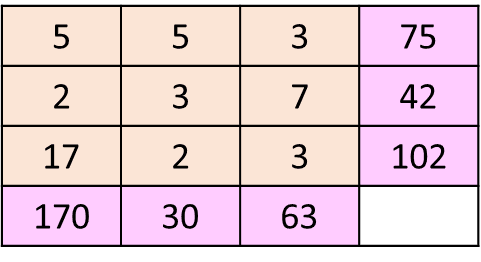Activity W1.2 The Hailstone Number Game
Step 1: Think of any number
Step 2: If the number is odd, triple it and add 1, if the number is even, halve it.
Step 3: Continue step 2, based on the resulting number in step 2 and continue the steps
Step 4: Write the pattern generated.,
e.g.,
Step 1: 5
Step 2: 3x5+1= 16
Step 3: 16/2 = 8
Step 4: 8/2 = 4
Step 5: 4/2 =2
Step 6: 2/2 =1
Step 7: 3x1+1 = 4
Step 8: 4/2 = 2
Step 9: 2/2 =1 ……………………….
Resulting pattern is 5, 16, 8, 4, 2, 1, 4, 2, 1, 4, 2, 1, ………………….
Ask the students to play it in pairs
Let one child give the number, the other one develops the pattern and vice versa.
Discuss all the patterns they developed and ask them to find out the reason for the pattern which is named as hailstone numbers.
Explore a Magical Number Pattern!
Objective:
Students discover a repeating numerical pattern using simple rules and understand the concept of hailstone numbers (also called the Collatz sequence).
How to Play:
-
Step 1: Think of any positive number.
-
Step 2:
-
If the number is odd → multiply it by 3 and add 1.
-
If the number is even → divide it by 2.
-
-
Step 3: Repeat the process with the new number.
-
Step 4: Observe and record the pattern.
Example: Start with 7
Let's generate the pattern:
-
7 (odd) → 3×7 + 1 = 22
-
22 (even) → 22 ÷ 2 = 11
-
11 (odd) → 3×11 + 1 = 34
-
34 → 17
-
17 → 52
-
52 → 26
-
26 → 13
-
13 → 40
-
40 → 20
-
20 → 10
-
10 → 5
-
5 → 16
-
16 → 8
-
8 → 4
-
4 → 2
-
2 → 1
-
1 → 4
-
4 → 2
-
2 → 1 → then continues as: 4, 2, 1...
Pattern:
7, 22, 11, 34, 17, 52, 26, 13, 40, 20, 10, 5, 16, 8, 4, 2, 1, 4, 2, 1,...
What are Hailstone Numbers?
The numbers in this sequence are called hailstone numbers because they rise and fall unpredictably—like hailstones in a storm—before eventually settling into the loop 4 → 2 → 1.
This pattern is part of a famous mathematical problem called the Collatz Conjecture. No matter which number you start with, the pattern always falls to 1!
Classroom Pair Activity:
-
Partner A: Chooses a number.
-
Partner B: Applies the rules and writes down the sequence.
-
Then switch roles!
-
Compare patterns: Who reached 1 faster? Which number had more steps?
Questions for Discussion:
-
Do all numbers eventually reach 1?
-
Which numbers take longer?
-
How do odd and even numbers affect the pattern?
Illustrative Image:
A fun and colorful visual representation of the pattern starting from 7:
hailstone number pattern image
(Image shows numbers rising and falling like hailstones, before looping into 4 → 2 → 1.)
Wrap-Up:
This activity builds logical thinking, pattern recognition, and number sense. It's exciting, unpredictable, and a great way to spark mathematical curiosity in your students!















